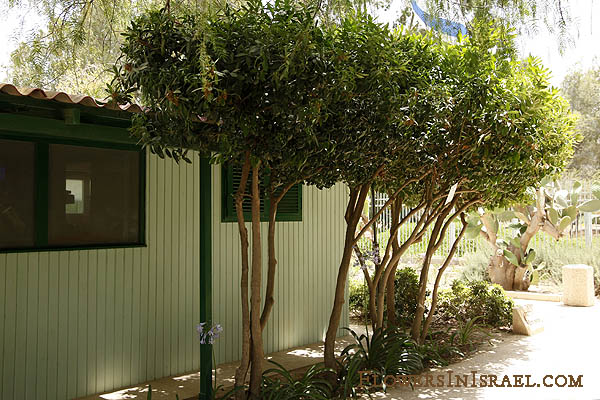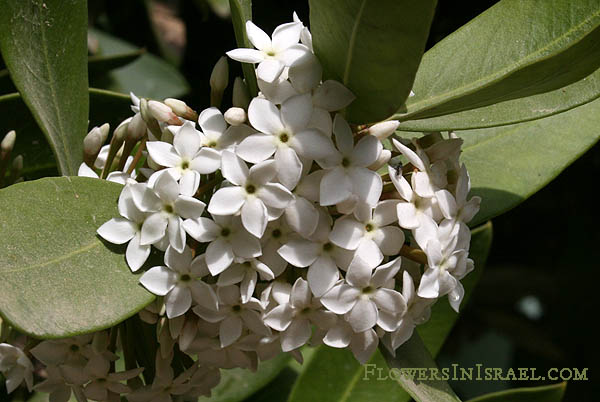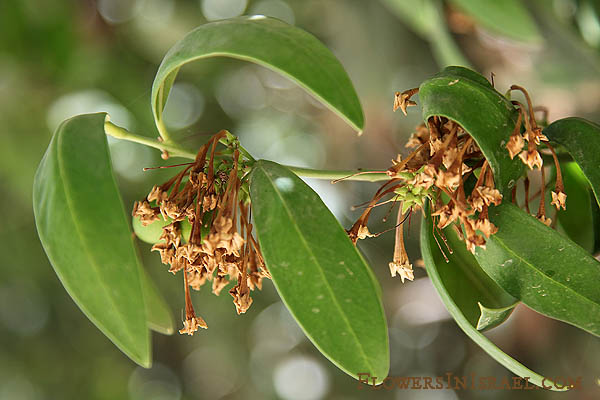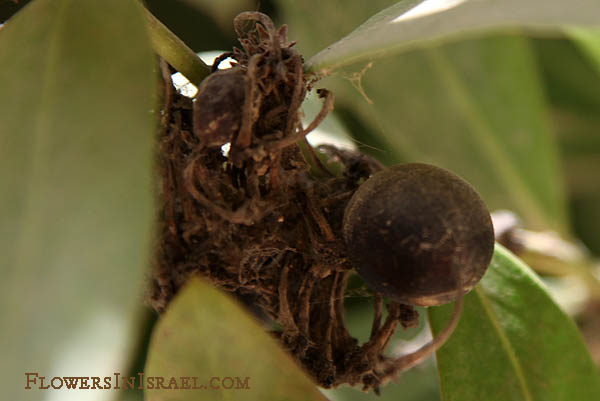Hebrew: אקוקנטרה ,חד-מאבק רעיל, Arabic: ثبيرة متقابلة الأوراق
| Scientific name: | Acokanthera oppositifolia (Lam.) Codd | |
| Synonym name: | Acokanthera longiflora, Acokanthera venenata, Cestrum oppositifolium | |
| Common name: | Poison Bush, Bushman's Poison | |
| Hebrew name: | חד-מאבק רעיל ,אקוקנטרה | |
| Arabic name: | ثبيرة متقابلة الأوراق | |
| Family: | Apocynaceae, Oleander family, הרדופיים |

Location: Ben Gurion's Hut, Sede Boker |
| Life form: | large shrub or small tree | |
| Stems: | 200–500 cm by 300–500 cm; multi-stemmed shrub | |
| Leaves: | Simple, elliptic or obovate, smooth, leathery | |
| Inflorescence: | Densely clustered flowers in the leaf axils | |
| Flowers: | Tubular flowers (+/-1cm), pinkish outside with 5 white petal lobes; fragrant | |
| Fruits / pods: | Drupe, ovoid , 1-2cm; green, ripening pink-red to purplish-black | |
| Flowering Period: | March, April, May, June, July, August | |
| Chorotype: | South Africa | |
| Summer shedding: | Perennating |

Location: Ben Gurion's Hut, Sede Boker Derivation of the botanical name: Acokanthera, Greek akis, a spike; anthera, anthers. The anthers are pointed. oppositifolia with leaves growing opposite to each other on each side of the stem. arrangement of the leaves. The common name derives from the fact that the poisonous sap has been used by bushmen (Khoisan) to make poison-arrows.

Location: Ben Gurion's Hut, Sede Boker 
Location: Ben Gurion's Hut, Sede Boker |